An Introduction to Continuum Mechanics 2nd Edition by J. N. Reddy, ISBN-13: 978-1107025431
[PDF eBook eTextbook]
- Publisher: Cambridge University Press; 2nd edition (July 29, 2013)
- Language: English
- 470 pages
- ISBN-10: 1107025435
- ISBN-13: 978-1107025431
This best-selling textbook presents the concepts of continuum mechanics, and the second edition includes additional explanations, examples and exercises.
This best-selling textbook presents the concepts of continuum mechanics in a simple yet rigorous manner. The book introduces the invariant form as well as the component form of the basic equations and their applications to problems in elasticity, fluid mechanics, and heat transfer, and offers a brief introduction to linear viscoelasticity. The book is ideal for advanced undergraduates and beginning graduate students looking to gain a strong background in the basic principles common to all major engineering fields, and for those who will pursue further work in fluid dynamics, elasticity, plates and shells, viscoelasticity, plasticity, and interdisciplinary areas such as geomechanics, biomechanics, mechanobiology, and nanoscience. The book features derivations of the basic equations of mechanics in invariant (vector and tensor) form and specification of the governing equations to various coordinate systems, and numerous illustrative examples, chapter summaries, and exercise problems. This second edition includes additional explanations, examples, and problems.
Table of Contents:
List of Symbols . . . . . . . . . . . . . . . . . . . . . . . . xvii
Preface to the Second Edition . . . . . . . . . . . . . . . . . xxiii
Preface to the First Edition . . . . . . . . . . . . . . . . . . xxv
About the Author . . . . . . . . . . . . . . . . . . . . . . xxvii
1 INTRODUCTION . . . . . . . . . . . . . . . . . . . . . . 1
1.1 Continuum Mechanics . . . . . . . . . . . . . . . . . . . . 1
1.2 A Look Forward . . . . . . . . . . . . . . . . . . . . . . . 4
1.3 Summary . . . . . . . . . . . . . . . . . . . . . . . . . . 5
Problems . . . . . . . . . . . . . . . . . . . . . . . . . . 6
2 VECTORS AND TENSORS . . . . . . . . . . . . . . . . . 9
2.1 Background and Overview . . . . . . . . . . . . . . . . . . . 9
2.2 Vector Algebra . . . . . . . . . . . . . . . . . . . . . . . . 10
2.2.1 Definition of a Vector . . . . . . . . . . . . . . . . . . 10
2.2.1.1 Vector addition . . . . . . . . . . . . . . . . . . . 11
2.2.1.2 Multiplication of a vector by a scalar . . . . . . . . . . 11
2.2.1.3 Linear independence of vectors . . . . . . . . . . . . . 11
2.2.2 Scalar and Vector Products . . . . . . . . . . . . . . . 12
2.2.2.1 Scalar product . . . . . . . . . . . . . . . . . . . . 12
2.2.2.2 Vector product . . . . . . . . . . . . . . . . . . . . 13
2.2.2.3 Triple products of vectors . . . . . . . . . . . . . . . 16
2.2.3 Plane Area as a Vector . . . . . . . . . . . . . . . . . 17
2.2.4 Reciprocal Basis . . . . . . . . . . . . . . . . . . . . 19
2.2.4.1 Components of a vector . . . . . . . . . . . . . . . . 19
2.2.4.2 General basis . . . . . . . . . . . . . . . . . . . . 19
2.2.4.3 Orthonormal basis . . . . . . . . . . . . . . . . . . 21
2.2.4.4 The Gram–Schmidt orthonormalization . . . . . . . . . 22
2.2.5 Summation Convention . . . . . . . . . . . . . . . . . 23
2.2.5.1 Dummy index . . . . . . . . . . . . . . . . . . . . 24
2.2.5.2 Free index . . . . . . . . . . . . . . . . . . . . . . 24
2.2.5.3 Kronecker delta . . . . . . . . . . . . . . . . . . . . 25
2.2.5.4 Permutation symbol . . . . . . . . . . . . . . . . . . 25
2.2.6 Transformation Law for Different Bases . . . . . . . . . . 28
2.2.6.1 General transformation laws . . . . . . . . . . . . . . 28
2.2.6.2 Transformation laws for orthonormal systems . . . . . . 29
viii CONTENTS
2.3 Theory of Matrices . . . . . . . . . . . . . . . . . . . . . . 31
2.3.1 Definition . . . . . . . . . . . . . . . . . . . . . . . 31
2.3.2 Matrix Addition and Multiplication of a Matrix by a Scalar . 32
2.3.3 Matrix Transpose . . . . . . . . . . . . . . . . . . . . 33
2.3.4 Symmetric and Skew Symmetric Matrices . . . . . . . . . 33
2.3.5 Matrix Multiplication . . . . . . . . . . . . . . . . . . 34
2.3.6 Inverse and Determinant of a Matrix . . . . . . . . . . . 36
2.3.7 Positive-Definite and Orthogonal Matrices . . . . . . . . . 39
2.4 Vector Calculus . . . . . . . . . . . . . . . . . . . . . . . . 40
2.4.1 Differentiation of a Vector with Respect to a Scalar . . . . . 40
2.4.2 Curvilinear Coordinates . . . . . . . . . . . . . . . . . 42
2.4.3 The Fundamental Metric . . . . . . . . . . . . . . . . . 43
2.4.4 Derivative of a Scalar Function of a Vector . . . . . . . . . 44
2.4.5 The Del Operator . . . . . . . . . . . . . . . . . . . . 45
2.4.6 Divergence and Curl of a Vector . . . . . . . . . . . . . 47
2.4.7 Cylindrical and Spherical Coordinate Systems . . . . . . . 51
2.4.8 Gradient, Divergence, and Curl Theorems . . . . . . . . . 52
2.5 Tensors . . . . . . . . . . . . . . . . . . . . . . . . . . . 53
2.5.1 Dyads and Dyadics . . . . . . . . . . . . . . . . . . . 53
2.5.2 Nonion Form of a Second-Order Tensor . . . . . . . . . . 54
2.5.3 Transformation of Components of a Tensor . . . . . . . . . 57
2.5.4 Higher-Order Tensors . . . . . . . . . . . . . . . . . . 58
2.5.5 Tensor Calculus . . . . . . . . . . . . . . . . . . . . . 59
2.5.6 Eigenvalues and Eigenvectors . . . . . . . . . . . . . . 62
2.5.6.1 Eigenvalue problem . . . . . . . . . . . . . . . . . . 62
2.5.6.2 Eigenvalues and eigenvectors of a real symmetric tensor . . 62
2.5.6.3 Spectral theorem . . . . . . . . . . . . . . . . . . . 64
2.5.6.4 Calculation of eigenvalues and eigenvectors . . . . . . . 64
2.6 Summary . . . . . . . . . . . . . . . . . . . . . . . . . . 72
Problems . . . . . . . . . . . . . . . . . . . . . . . . . . 73
3 KINEMATICS OF CONTINUA . . . . . . . . . . . . . . 81
3.1 Introduction . . . . . . . . . . . . . . . . . . . . . . . . . 81
CONTENTS ix
3.2 Descriptions of Motion . . . . . . . . . . . . . . . . . . . . . 82
3.2.1 Configurations of a Continuous Medium . . . . . . . . . . 82
3.2.2 Material Description . . . . . . . . . . . . . . . . . . 83
3.2.3 Spatial Description . . . . . . . . . . . . . . . . . . . 85
3.2.4 Displacement Field . . . . . . . . . . . . . . . . . . . 88
3.3 Analysis of Deformation . . . . . . . . . . . . . . . . . . . . 89
3.3.1 Deformation Gradient . . . . . . . . . . . . . . . . . . 89
3.3.2 Isochoric, Homogeneous, and Inhomogeneous Deformations . . 93
3.3.2.1 Isochoric deformation . . . . . . . . . . . . . . . . . 93
3.3.2.2 Homogeneous deformation . . . . . . . . . . . . . . . 93
3.3.2.3 Nonhomogeneous deformation . . . . . . . . . . . . . 95
3.3.3 Change of Volume and Surface . . . . . . . . . . . . . . 96
3.3.3.1 Volume change . . . . . . . . . . . . . . . . . . . . 96
3.3.3.2 Area change . . . . . . . . . . . . . . . . . . . . . 97
3.4 Strain Measures . . . . . . . . . . . . . . . . . . . . . . . 98
3.4.1 Cauchy–Green Deformation Tensors . . . . . . . . . . . . 98
3.4.2 Green–Lagrange Strain Tensor . . . . . . . . . . . . . . 100
3.4.3 Physical Interpretation of Green–Lagrange Strain Components 101
3.4.4 Cauchy and Euler Strain Tensors . . . . . . . . . . . . . 103
3.4.5 Transformation of Strain Components . . . . . . . . . . . 106
3.4.6 Invariants and Principal Values of Strains . . . . . . . . . 109
3.5 Infinitesimal Strain Tensor and Rotation Tensor . . . . . . . . 111
3.5.1 Infinitesimal Strain Tensor . . . . . . . . . . . . . . . . 111
3.5.2 Physical Interpretation of Infinitesimal Strain
Tensor Components . . . . . . . . . . . . . . . . . . . 112
3.5.3 Infinitesimal Rotation Tensor . . . . . . . . . . . . . . . 114
3.5.4 Infinitesimal Strains in Cylindrical and Spherical
Coordinate Systems . . . . . . . . . . . . . . . . . . . 116
3.5.4.1 Cylindrical coordinate system . . . . . . . . . . . . 117
3.5.4.2 Spherical coordinate system . . . . . . . . . . . . . 117
3.6 Velocity Gradient and Vorticity Tensors . . . . . . . . . . . . 118
3.6.1 Definitions . . . . . . . . . . . . . . . . . . . . . . . 118
3.6.2 Relationship Between D and ˙E . . . . . . . . . . . . . . 119
x CONTENTS
3.7 Compatibility Equations . . . . . . . . . . . . . . . . . . . 120
3.7.1 Preliminary Comments . . . . . . . . . . . . . . . . . 120
3.7.2 Infinitesimal Strains . . . . . . . . . . . . . . . . . . . 121
3.7.3 Finite Strains . . . . . . . . . . . . . . . . . . . . . . 125
3.8 Rigid-Body Motions and Material Objectivity . . . . . . . . . 125
3.8.1 Superposed Rigid-Body Motions . . . . . . . . . . . . . 125
3.8.1.1 Introduction and rigid-body transformation . . . . . . 125
3.8.1.2 Effect on F . . . . . . . . . . . . . . . . . . . . 128
3.8.1.3 Effect on C and E . . . . . . . . . . . . . . . . . 128
3.8.1.4 Effect on L and D . . . . . . . . . . . . . . . . . 129
3.8.2 Material Objectivity . . . . . . . . . . . . . . . . . . . 129
3.8.2.1 Observer transformation . . . . . . . . . . . . . . 129
3.8.2.2 Objectivity of various kinematic measures . . . . . . . 130
3.8.2.3 Time rate of change in a rotating frame of reference . . 131
3.9 Polar Decomposition Theorem . . . . . . . . . . . . . . . . 132
3.9.1 Preliminary Comments . . . . . . . . . . . . . . . . . 132
3.9.2 Rotation and Stretch Tensors . . . . . . . . . . . . . . . 132
3.9.3 Objectivity of Stretch Tensors . . . . . . . . . . . . . . 138
3.10 Summary . . . . . . . . . . . . . . . . . . . . . . . . . 139
Problems . . . . . . . . . . . . . . . . . . . . . . . . . 140
4 STRESS MEASURES . . . . . . . . . . . . . . . . . . 151
4.1 Introduction . . . . . . . . . . . . . . . . . . . . . . . . 151
4.2 Cauchy Stress Tensor and Cauchy’s Formula . . . . . . . . . . 151
4.2.1 Stress Vector . . . . . . . . . . . . . . . . . . . . . . 151
4.2.2 Cauchy’s Formula . . . . . . . . . . . . . . . . . . . 152
4.2.3 Cauchy Stress Tensor . . . . . . . . . . . . . . . . . . 153
4.3 Transformation of Stress Components and Principal Stresses . . . 157
4.3.1 Transformation of Stress Components . . . . . . . . . . . 157
4.3.1.1 Invariants . . . . . . . . . . . . . . . . . . . . . 157
4.3.1.2 Transformation equations . . . . . . . . . . . . . . 157
4.3.2 Principal Stresses and Principal Planes . . . . . . . . . . 160
4.3.3 Maximum Shear Stress . . . . . . . . . . . . . . . . . 162
CONTENTS xi
4.4 Other Stress Measures . . . . . . . . . . . . . . . . . . . . 164
4.4.1 Preliminary Comments . . . . . . . . . . . . . . . . . 164
4.4.2 First Piola–Kirchhoff Stress Tensor . . . . . . . . . . . . 164
4.4.3 Second Piola–Kirchhoff Stress Tensor . . . . . . . . . . . 165
4.5 Equilibrium Equations for Small Deformations . . . . . . . . . 169
4.6 Objectivity of Stress Tensors . . . . . . . . . . . . . . . . . 171
4.6.1 Cauchy Stress Tensor . . . . . . . . . . . . . . . . . . 171
4.6.2 First Piola–Kirchhoff Stress Tensor . . . . . . . . . . . . 172
4.6.3 Second Piola–Kirchhoff Stress Tensor . . . . . . . . . . . 172
4.7 Summary . . . . . . . . . . . . . . . . . . . . . . . . . 172
Problems . . . . . . . . . . . . . . . . . . . . . . . . . 173
5 CONSERVATION AND BALANCE LAWS . . . . . . . . 181
5.1 Introduction . . . . . . . . . . . . . . . . . . . . . . . . 181
5.2 Conservation of Mass . . . . . . . . . . . . . . . . . . . . 182
5.2.1 Preliminary Discussion . . . . . . . . . . . . . . . . . 182
5.2.2 Material Time Derivative . . . . . . . . . . . . . . . . 182
5.2.3 Vector and Integral Identities . . . . . . . . . . . . . . . 184
5.2.3.1 Vector identities . . . . . . . . . . . . . . . . . . 184
5.2.3.2 Integral identities . . . . . . . . . . . . . . . . . 185
5.2.4 Continuity Equation in the Spatial Description . . . . . . . 185
5.2.5 Continuity Equation in the Material Description . . . . . . 191
5.2.6 Reynolds Transport Theorem . . . . . . . . . . . . . . . 193
5.3 Balance of Linear and Angular Momentum . . . . . . . . . . . 193
5.3.1 Principle of Balance of Linear Momentum . . . . . . . . . 193
5.3.1.1 Equations of motion in the spatial description . . . . . 197
5.3.1.2 Equations of motion in the material description . . . . 199
5.3.2 Spatial Equations of Motion in Cylindrical and
Spherical Coordinates . . . . . . . . . . . . . . . . . . 201
5.3.2.1 Cylindrical coordinates . . . . . . . . . . . . . . . 202
5.3.2.2 Spherical coordinates . . . . . . . . . . . . . . . . 202
5.3.3 Principle of Balance of Angular Momentum . . . . . . . . 203
5.3.3.1 Monopolar case . . . . . . . . . . . . . . . . . . 203
5.3.3.2 Multipolar case . . . . . . . . . . . . . . . . . . 205
xii CONTENTS
5.4 Thermodynamic Principles . . . . . . . . . . . . . . . . . . 206
5.4.1 Introduction . . . . . . . . . . . . . . . . . . . . . . 206
5.4.2 Balance of Energy . . . . . . . . . . . . . . . . . . . 207
5.4.2.1 Energy equation in the spatial description . . . . . . . 207
5.4.2.2 Energy equation in the material description . . . . . . 209
5.4.3 Entropy Inequality . . . . . . . . . . . . . . . . . . . 210
5.4.3.1 Homogeneous processes . . . . . . . . . . . . . . . 210
5.4.3.2 Inhomogeneous processes . . . . . . . . . . . . . . 210
5.5 Summary . . . . . . . . . . . . . . . . . . . . . . . . . 212
5.5.1 Preliminary Comments . . . . . . . . . . . . . . . . . 212
5.5.2 Conservation and Balance Equations in
the Spatial Description . . . . . . . . . . . . . . . . . 212
5.5.3 Conservation and Balance Equations in
the Material Description . . . . . . . . . . . . . . . . . 213
5.5.4 Closing Comments . . . . . . . . . . . . . . . . . . . 213
Problems . . . . . . . . . . . . . . . . . . . . . . . . . 214
6 CONSTITUTIVE EQUATIONS . . . . . . . . . . . . . . 221
6.1 Introduction . . . . . . . . . . . . . . . . . . . . . . . . 221
6.1.1 General Comments . . . . . . . . . . . . . . . . . . . 221
6.1.2 General Principles of Constitutive Theory . . . . . . . . . 222
6.1.3 Material Frame Indifference . . . . . . . . . . . . . . . 223
6.1.4 Restrictions Placed by the Entropy Inequality . . . . . . . 224
6.2 Elastic Materials . . . . . . . . . . . . . . . . . . . . . . 225
6.2.1 Cauchy-Elastic Materials . . . . . . . . . . . . . . . . . 225
6.2.2 Green-Elastic or Hyperelastic Materials . . . . . . . . . . 226
6.2.3 Linearized Hyperelastic Materials: Infinitesimal Strains . . . 227
6.3 Hookean Solids . . . . . . . . . . . . . . . . . . . . . . 228
6.3.1 Generalized Hooke’s Law . . . . . . . . . . . . . . . . 228
6.3.2 Material Symmetry Planes . . . . . . . . . . . . . . . . 230
6.3.3 Monoclinic Materials . . . . . . . . . . . . . . . . . . 232
6.3.4 Orthotropic Materials . . . . . . . . . . . . . . . . . . 233
6.3.5 Isotropic Materials . . . . . . . . . . . . . . . . . . . 237
6.4 Nonlinear Elastic Constitutive Relations . . . . . . . . . . . . 241
CONTENTS xiii
6.5 Newtonian Fluids . . . . . . . . . . . . . . . . . . . . . . 242
6.5.1 Introduction . . . . . . . . . . . . . . . . . . . . . . 242
6.5.2 Ideal Fluids . . . . . . . . . . . . . . . . . . . . . . 243
6.5.3 Viscous Incompressible Fluids . . . . . . . . . . . . . . 244
6.6 Generalized Newtonian Fluids . . . . . . . . . . . . . . . . 245
6.6.1 Introduction . . . . . . . . . . . . . . . . . . . . . . 245
6.6.2 Inelastic Fluids . . . . . . . . . . . . . . . . . . . . 245
6.6.2.1 Power-law model . . . . . . . . . . . . . . . . . . 246
6.6.2.2 Carreau model . . . . . . . . . . . . . . . . . . . 246
6.6.2.3 Bingham model . . . . . . . . . . . . . . . . . . 247
6.6.3 Viscoelastic Constitutive Models . . . . . . . . . . . . . 247
6.6.3.1 Differential models . . . . . . . . . . . . . . . . . 247
6.6.3.2 Integral models . . . . . . . . . . . . . . . . . . 250
6.7 Heat Transfer . . . . . . . . . . . . . . . . . . . . . . . 251
6.7.1 Introduction . . . . . . . . . . . . . . . . . . . . . . 251
6.7.2 Fourier’s Heat Conduction Law . . . . . . . . . . . . . . 251
6.7.3 Newton’s Law of Cooling . . . . . . . . . . . . . . . . 252
6.7.4 Stefan–Boltzmann Law . . . . . . . . . . . . . . . . . 252
6.8 Constitutive Relations for Coupled Problems . . . . . . . . . . 252
6.8.1 Electromagnetics . . . . . . . . . . . . . . . . . . . . 252
6.8.1.1 Maxwell’s equations . . . . . . . . . . . . . . . . 253
6.8.1.2 Constitutive relations . . . . . . . . . . . . . . . . 253
6.8.2 Thermoelasticity . . . . . . . . . . . . . . . . . . . . 255
6.8.3 Hygrothermal elasticity . . . . . . . . . . . . . . . . . 255
6.8.4 Electroelasticity . . . . . . . . . . . . . . . . . . . . 256
6.9 Summary . . . . . . . . . . . . . . . . . . . . . . . . . 258
Problems . . . . . . . . . . . . . . . . . . . . . . . . . 259
7 LINEARIZED ELASTICITY . . . . . . . . . . . . . . . 265
7.1 Introduction . . . . . . . . . . . . . . . . . . . . . . . . 265
7.2 Governing Equations . . . . . . . . . . . . . . . . . . . . 265
7.2.1 Preliminary Comments . . . . . . . . . . . . . . . . . 266
7.2.2 Summary of Equations . . . . . . . . . . . . . . . . . 266
xiv CONTENTS
7.2.2.1 Strain-displacement equations . . . . . . . . . . . . 266
7.2.2.2 Equations of motion . . . . . . . . . . . . . . . . 267
7.2.2.3 Constitutive equations . . . . . . . . . . . . . . . 268
7.2.2.4 Boundary conditions . . . . . . . . . . . . . . . . 269
7.2.2.5 Compatibility conditions . . . . . . . . . . . . . . 269
7.2.3 The Navier Equations . . . . . . . . . . . . . . . . . . 269
7.2.4 The Beltrami–Michell Equations . . . . . . . . . . . . . 270
7.3 Solution Methods . . . . . . . . . . . . . . . . . . . . . . 271
7.3.1 Types of Problems . . . . . . . . . . . . . . . . . . . 271
7.3.2 Types of Solution Methods . . . . . . . . . . . . . . . . 272
7.3.3 Examples of the Semi-Inverse Method . . . . . . . . . . . 273
7.3.4 Stretching and Bending of Beams . . . . . . . . . . . . . 278
7.3.5 Superposition Principle . . . . . . . . . . . . . . . . . 283
7.3.6 Uniqueness of Solutions . . . . . . . . . . . . . . . . . 284
7.4 Clapeyron’s, Betti’s, and Maxwell’s Theorems . . . . . . . . . 285
7.4.1 Clapeyron’s Theorem . . . . . . . . . . . . . . . . . . 285
7.4.2 Betti’s Reciprocity Theorem . . . . . . . . . . . . . . . 288
7.4.3 Maxwell’s Reciprocity Theorem . . . . . . . . . . . . . . 291
7.5 Solution of Two-Dimensional Problems . . . . . . . . . . . . 293
7.5.1 Introduction . . . . . . . . . . . . . . . . . . . . . . 293
7.5.2 Plane Strain Problems . . . . . . . . . . . . . . . . . 294
7.5.3 Plane Stress Problems . . . . . . . . . . . . . . . . . 297
7.5.4 Unification of Plane Stress and Plane Strain Problems . . . 300
7.5.5 Airy Stress Function . . . . . . . . . . . . . . . . . . 301
7.5.6 Saint-Venant’s Principle . . . . . . . . . . . . . . . . . 303
7.5.7 Torsion of Cylindrical Members . . . . . . . . . . . . . . 308
7.5.7.1 Warping function . . . . . . . . . . . . . . . . . . 309
7.5.7.2 Prandtl’s stress function . . . . . . . . . . . . . . 311
7.6 Methods Based on Total Potential Energy . . . . . . . . . . . 314
7.6.1 Introduction . . . . . . . . . . . . . . . . . . . . . . 314
7.6.2 The Variational Operator . . . . . . . . . . . . . . . . 314
7.6.3 The Principle of the Minimum Total Potential Energy . . . . 316
7.6.3.1 Construction of the total potential energy functional . . 316
7.6.3.2 Euler’s equations and natural boundary conditions . . . 317
7.6.3.3 Minimum property of the total potential energy functional 319
CONTENTS xv
7.6.4 Castigliano’s Theorem I . . . . . . . . . . . . . . . . . 322
7.6.5 The Ritz Method . . . . . . . . . . . . . . . . . . . . 326
7.6.5.1 The variational problem . . . . . . . . . . . . . . . 326
7.6.5.2 Description of the method . . . . . . . . . . . . . . 328
7.7 Hamilton’s Principle . . . . . . . . . . . . . . . . . . . . . 334
7.7.1 Introduction . . . . . . . . . . . . . . . . . . . . . . 334
7.7.2 Hamilton’s Principle for a Rigid Body . . . . . . . . . . . 334
7.7.3 Hamilton’s Principle for a Continuum . . . . . . . . . . . 338
7.8 Summary . . . . . . . . . . . . . . . . . . . . . . . . . 341
Problems . . . . . . . . . . . . . . . . . . . . . . . . . 342
8 FLUID MECHANICS AND HEAT TRANSFER . . . . . 355
8.1 Governing Equations . . . . . . . . . . . . . . . . . . . . 355
8.1.1 Preliminary Comments . . . . . . . . . . . . . . . . . 355
8.1.2 Summary of Equations . . . . . . . . . . . . . . . . . 356
8.2 Fluid Mechanics Problems . . . . . . . . . . . . . . . . . . 357
8.2.1 Governing Equations of Viscous Fluids . . . . . . . . . . 357
8.2.2 Inviscid Fluid Statics . . . . . . . . . . . . . . . . . . 360
8.2.3 Parallel Flow (Navier–Stokes Equations) . . . . . . . . . . 362
8.2.4 Problems with Negligible Convective Terms . . . . . . . . 367
8.2.5 Energy Equation for One-Dimensional Flows . . . . . . . . 370
8.3 Heat Transfer Problems . . . . . . . . . . . . . . . . . . . 373
8.3.1 Governing Equations . . . . . . . . . . . . . . . . . . 373
8.3.2 Heat Conduction in a Cooling Fin . . . . . . . . . . . . . 374
8.3.3 Axisymmetric Heat Conduction in a Circular Cylinder . . . . 376
8.3.4 Two-Dimensional Heat Transfer . . . . . . . . . . . . . 379
8.3.5 Coupled Fluid Flow and Heat Transfer . . . . . . . . . . 381
8.4 Summary . . . . . . . . . . . . . . . . . . . . . . . . . 382
Problems . . . . . . . . . . . . . . . . . . . . . . . . . 382
9 LINEARIZED VISCOELASTICITY . . . . . . . . . . . 389
9.1 Introduction . . . . . . . . . . . . . . . . . . . . . . . . 389
9.1.1 Preliminary Comments . . . . . . . . . . . . . . . . . 389
xvi CONTENTS
9.1.2 Initial Value Problem, the Unit Impulse, and the Unit Step
Function . . . . . . . . . . . . . . . . . . . . . . . . 390
9.1.3 The Laplace Transform Method . . . . . . . . . . . . . . 392
9.2 Spring and Dashpot Models . . . . . . . . . . . . . . . . . 396
9.2.1 Creep Compliance and Relaxation Modulus . . . . . . . . 396
9.2.2 Maxwell Element . . . . . . . . . . . . . . . . . . . . 397
9.2.2.1 Creep response . . . . . . . . . . . . . . . . . . . 397
9.2.2.2 Relaxation response . . . . . . . . . . . . . . . . 398
9.2.3 Kelvin–Voigt Element . . . . . . . . . . . . . . . . . . 400
9.2.3.1 Creep response . . . . . . . . . . . . . . . . . . . 400
9.2.3.2 Relaxation response . . . . . . . . . . . . . . . . 401
9.2.4 Three-Element Models . . . . . . . . . . . . . . . . . . 402
9.2.5 Four-Element Models . . . . . . . . . . . . . . . . . . 404
9.3 Integral Constitutive Equations . . . . . . . . . . . . . . . . 407
9.3.1 Hereditary Integrals . . . . . . . . . . . . . . . . . . . 407
9.3.2 Hereditary Integrals for Deviatoric Components . . . . . . . 410
9.3.3 The Correspondence Principle . . . . . . . . . . . . . . 412
9.3.4 Elastic and Viscoelastic Analogies . . . . . . . . . . . . . 414
9.4 Summary . . . . . . . . . . . . . . . . . . . . . . . . . 420
Problems . . . . . . . . . . . . . . . . . . . . . . . . . 420
References for Additional Reading . . . . . . . . . . . . . 425
Answers to Selected Problems . . . . . . . . . . . . . . . . 429
Index . . . . . . . . . . . . . . . . . . . . . . . . . . . . 441
J. N. Reddy is a University Distinguished Professor, Regents Professor and Oscar S. Wyatt Endowed Chair in the Department of Mechanical Engineering at Texas A&M University. He is internationally known for his contributions to theoretical and applied mechanics and computational mechanics. He is the author of more than 450 journal papers and 17 books. Dr Reddy is the recipient of numerous awards, including the Walter L. Huber Civil Engineering Research Prize of the American Society of Civil Engineers, the Worcester Reed Warner Medal and the Charles Russ Richards Memorial Award of the American Society of Mechanical Engineers, the 1997 Archie Higdon Distinguished Educator Award from the American Society of Engineering Education, the 1998 Nathan M. Newmark Medal from the American Society of Civil Engineers, the 2000 Excellence in the Field of Composites from the American Society of Composites, the 2003 Bush Excellence Award for Faculty in International Research from Texas A&M University and the 2003 Computational Solid Mechanics Award from the US Association of Computational Mechanics. Dr Reddy is a Fellow of AIAA, ASCE, ASME, the American Academy of Mechanics, the American Society of Composites, the US Association of Computational Mechanics, the International Association of Computational Mechanics and the Aeronautical Society of India. He is the Editor-in-Chief of Mechanics of Advanced Materials and Structures, the International Journal of Computational Methods in Engineering Science and Mechanics and the International Journal of Structural Stability and Dynamics. He also serves on the editorial boards of over two dozen other journals, including the International Journal for Numerical Methods in Engineering and the International Journal of Non-Linear Mechanics. Dr Reddy is one of the selective researchers in engineering recognized by ISI Highly Cited Researchers with 10,000-plus citations with an H-index of more than fifty.
What makes us different?
• Instant Download
• Always Competitive Pricing
• 100% Privacy
• FREE Sample Available
• 24-7 LIVE Customer Support

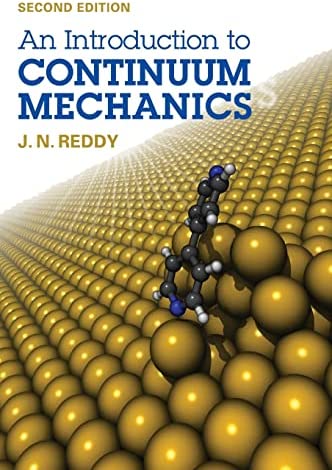
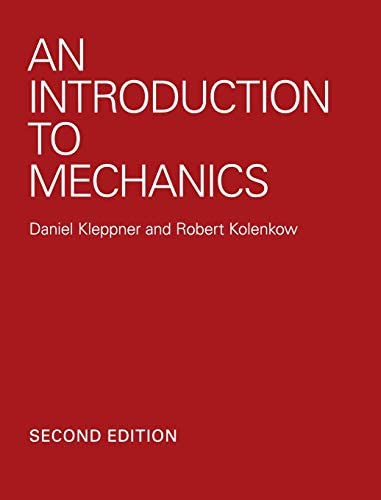

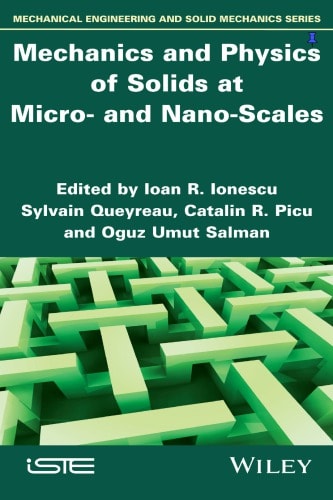
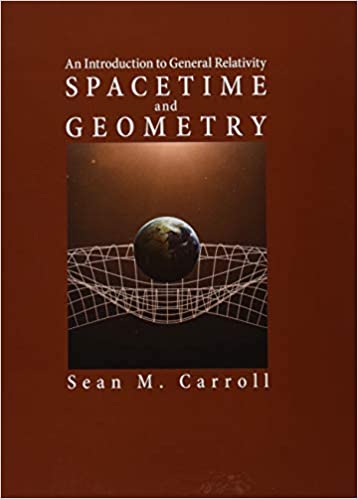
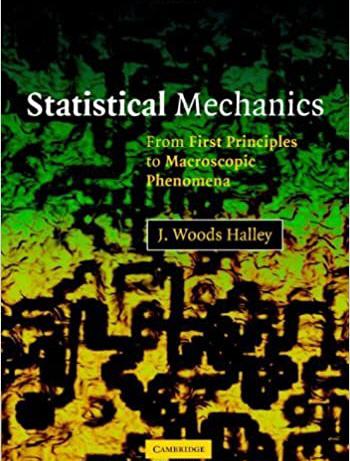
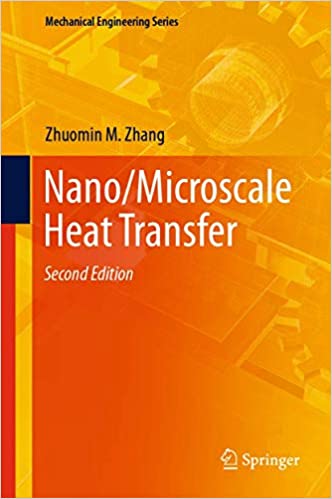

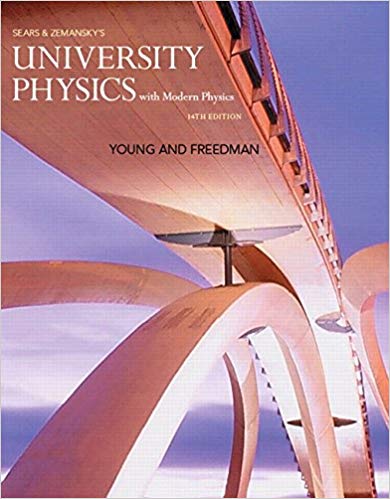
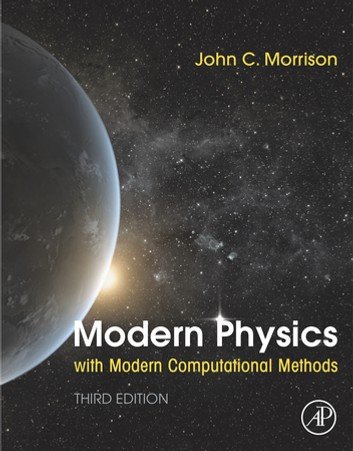
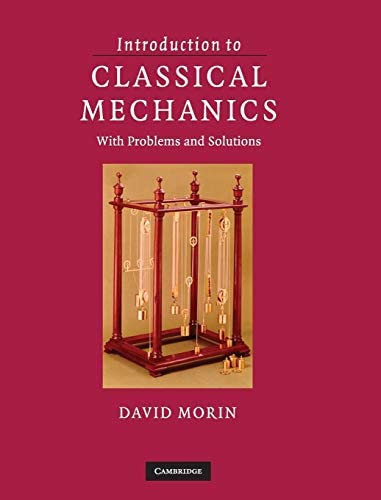
Ryan Edwards (verified owner) –
Fast and efficient, couldn’t be more satisfied.
Ethan Brooks (verified owner) –
Highly recommend this store, fast and reliable.
Austin Clark (verified owner) –
Excellent service, highly satisfied.